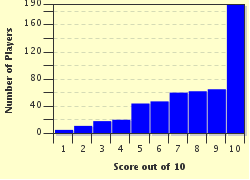Quiz Answer Key and Fun Facts
1. As Ralph the llama and Pliny prepare to leave for their round the world voyage - with the intention of discovering new and fantastic creatures - Ralph curses the weather, as a torrential downpour commences. "An animal like a lizard!" exclaims Pliny excitedly, pointing at a starred reptile amongst the rocks. Ralph sees nothing out of the ordinary, and tuts and tsks as Pliny tells stories of this creature, whose presence, it was said, was essential for a fire to burn. Then, like a flash, the weather improves and the creature disappears.
Which creature was Pliny telling Ralph about?
2. "There Arimaspians do dwell," says Pliny to Ralph as the pair reach the foot of the Carpathian Mountains. About to reach for his disposable, Ralph quickly realises that this race of men which Pliny is talking about - those who wage war against Griffins over gold - may be the result of an over-active imagination (call him cynical if you will).
Which of these features did Pliny attribute to the men of the Arimaspian tribe?
3. Arriving in Scandinavia, Pliny now drags Ralph the llama to a forested area to see, what he calls, a very odd creature indeed. Pliny ignores Ralph's assertions that they are watching a European elk, but continues with tales of how this animal's "upper lip is exceedingly great, and therefore as they graze and feed, they go retrograde."
Which beast does Pliny believe he is observing?
4. After a long trip across Siberia and down the east coast of Asia, Ralph decides to relax and sunbathe in India. Pliny, on the other hand, has been out exploring and returns with stories of one-legged humans, who use their enormous foot as a parasol, as well as a means of propelling them across the Indian land with huge jumps.
Which human-like creature, first described by Ctesias, is Pliny talking about?
5. Leaving India and now arriving in Arabia, Ralph the llama decides to take little notice of any more descriptive hyperboles which come out of Pliny's mouth. However, attention is needed when Pliny returns with blood on his hands. Whilst the injury is nothing serious, Pliny whines that he was attacked by a "javelin snake" which jumped at him from its perch in a tree.
Pliny calls this animal a Jaculus, but what else is it commonly known as?
6. With his hands bandaged, Pliny accompanies Ralph across the Red Sea and into Ethiopia. Ralph follows the mummified finger of Pliny, who is pointing to the sky, whilst describing a flock of large birds with the ears of horses. Ralph is left rather unconvinced by Pliny's elaboration that these are the offspring of another famous mythical beast, which also possesses the qualities of a bird and a horse.
Which creatures are being described by Pliny?
7. "Blemmyes!" shouts Pliny. "Bless you", retorts Ralph, but Pliny is not sneezing, he is identifying what he believes to be a strange race of men in Ethiopia. Although sometimes a bit misguided, Pliny is very well spoken, and describes the Belmmyes tribe as "acephalous."
What should you take this to mean?
8. As the duo travel from the east to the west of Africa, Pliny keeps Ralph the llama well informed about the many dragons he has seen. Which creature, one to which Pliny dedicated much of the eighth book of his "Naturalis Historia", does he say is the mortal enemy of the dragons of Africa?
9. Crossing the almost lifeless deserts of North Africa, Ralph struggles to force a chuckle from his dry throat as Pliny tells him of how these deserts were formed from the actions of a reptile "not more than twenty fingers long." Pliny continues, saying that despite the small size of this creature, it is known as the "king of reptiles" and is one of the deadliest monsters on earth.
What mythical creature is Pliny describing?
10. Having explored Europe, Asia and Africa, Ralph and Pliny jump on a boat which sets sail towards the boot of Italy, via the Mediterranean. The crashing waves trouble Ralph, who struggles to stay on his four feet, but Pliny puts the turbulence down to a sea monster, whose head is "as big as a cask which holds 90 gallons" and which has enormous tentacles.
Which well-talked about creature is Pliny describing here?
Source: Author
doublemm
This quiz was reviewed by FunTrivia editor
CellarDoor before going online.
Any errors found in FunTrivia content are routinely corrected through our feedback system.

